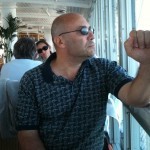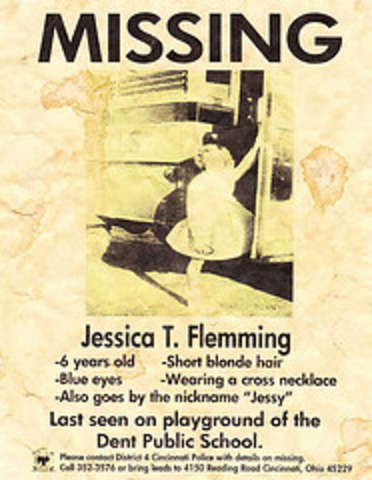Massimo Marino's Blog: The Ramblings and the Rumblings, page 8
November 8, 2015
Just Knowing Your Nouns and Verbs Makes you no Translator
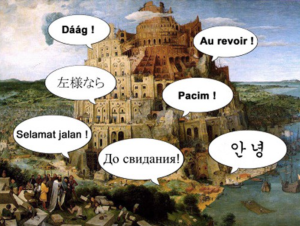 Yesterday I came across a friend of mine who`s really funny when he speaks English. You see, he knows lots of nouns, verbs, and the English grammar, too, but no Englishman (or American) can ever understand him, and that frustrates him a lot. The reason has nothing to do with his accent, or if he pronounces words in an impossible to decipher way, the reason is that he actually speaks Italian when he speaks English.
Yesterday I came across a friend of mine who`s really funny when he speaks English. You see, he knows lots of nouns, verbs, and the English grammar, too, but no Englishman (or American) can ever understand him, and that frustrates him a lot. The reason has nothing to do with his accent, or if he pronounces words in an impossible to decipher way, the reason is that he actually speaks Italian when he speaks English.
Let me share a few of his unique English expressions and you’ll understand better. You’ll better appreciate also the tasks for translators when they go through your manuscript and have to rewrite it in another language. Translation is not a word-by-word activity, but a new rendering of the impressions, visions, feelings that blossom from the page in one language, and have to be recreated using another. Not at all intuitive, translating is an art, and you have to be a writer at heart.
So, here we go with the funny part of this post… and if you, too, wonder what the heck my friend is saying, try google translate 
But get a professional translator when you`ll need it, or you’ll waste your money.
Non sto più nella pelle — I`m no more in my skin
Devi fare tabula rasa — You have to shave the table
Ridere a crepapelle — Laughing at die-skin
Mi piaci un botto — I like you a bang
Panna montata — Assembled cream
Sono a stecchetto — I’m at little stick
Ho saltato la cena — I jumped the dinner
Cappuccino e cornetto — Little hood and little horn
Passato di verdure — Vegetables` past
Uno strappo alle regole — A rip to the rules
Venite al sodo — Come to the hard-boiled
Non ha voce in capitolo — He has no voice in the chapter
Mi hai messo la pulce nell’orecchio — You put a flea in my ear
É alle prime armi — He`s at the first weapons
In barba a ogni regola — In beard to every rule
É tutto grasso che cola — It’s all fat that drools
É farina del mio sacco — It’s flour of my bag
Sono sul piede di partenza — I`m on my starting foot
Mi sono fatto un mazzo così — I`ve made myself such a bundle
Ci sono errori a monte — There are errors at the mountain
Il polso della situazione — The wrist of the situation
Lavoro in nero — Work in black
Porto franco — Port frank
Scusa, ho avuto una telefonata fiume — Sorry, I had a river phone call
Mandare tutto a monte — Send everything to the mountain
Sono partito in quarta — I started in the fourth
Sono all’altezza della situazione — I’m at the height of the situation
Biglietto da visita — Ticket from the visit
Prestare il fianco — To lend the hip
Cosa c`é in ballo? — What`s in the dance?
Siamo punto e a capo — We are dot and to the head
Hai colto nel segno — You’ve collected in the sign
Dobbiamo stringere la cinghia — We must pull the strap
Massimo Marino is a scientist envisioning science fiction. He spent years at CERN and The Lawrence Berkeley Lab followed by lead positions with Apple, Inc. and the World Economic Forum. He is also co-founder of “Squares on Blue”, a Big Data Analytics service company, and of BookGarage, a publishing service brokerage company.
Massimo currently lives in France and crosses the border with Switzerland multiple times daily, although he is no smuggler. #SFWApro
As a scientist writing science fiction, he went from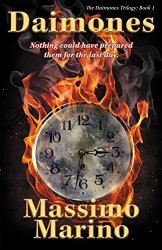 smashing particles at accelerators at SLAC and CERN to smashing words on a computer screen. He is is now an author with Booktrope Publishing, LCC, and Active Member of SFWA – Science Fiction & Fantasy Writers of America.
smashing particles at accelerators at SLAC and CERN to smashing words on a computer screen. He is is now an author with Booktrope Publishing, LCC, and Active Member of SFWA – Science Fiction & Fantasy Writers of America.
He’s the author of multi-awarded Daimones Trilogy. The 1st volume, Daimones (The Daimones Trilogy Book 1) , published by Booktrope is available since August 2015.
, published by Booktrope is available since August 2015. 
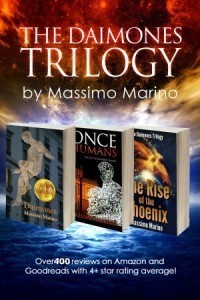 His novels have received the Seal of Excellency from both AwesomeIndies.net and IndiePENdents.org
His novels have received the Seal of Excellency from both AwesomeIndies.net and IndiePENdents.org
• 2012 PRG Reviewer’s Choice Award Winner in Science Fiction
• 2013 Hall of Fame – Best in Science Fiction, Quality Reads UK Book Club
• 2013 PRG Reviewer’s Choice Award Winner in Science Fiction Series
• 2014 Finalist – Science Fiction – Indie Excellence Awards L.A.
• 2014 Award Winner – Science Fiction Honorable Mention – Readers’ Favorite Annual Awards
His novels are available from Amazon, Barnes & Noble (Nook), iTunes Apple Store, and many other retailers around the world.
Join his mailing list for new releases, or follow him on Facebook, Google+, and Twitter.
The post Just Knowing Your Nouns and Verbs Makes you no Translator appeared first on § A Scientist Envisioning Science Fiction.
November 7, 2015
Ursula Le Guin on “Where Do You Get Your Ideas From?”
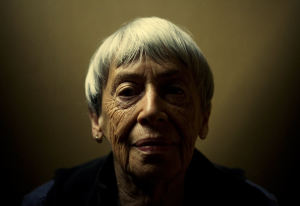
Ursula K. Lu Guin by Benjamin Reed
In 1987, Le Guin addressed the eternal question in an essay titled “Where Do You Get Your Ideas From?,” found in the altogether fantastic 1989 collection of her speeches, essays, and reviews, Dancing at the Edge of the World: Thoughts on Words, Women, Places
The reason everyone ask that kind of question is because writers can’t answer. The reason those questions arise all the time rests on two myths:
The reason why it is unanswerable is, I think, that it involves at least two false notions, myths, about how fiction is written.
First myth: There is a secret to being a writer. If you can just learn the secret, you will instantly be a writer; and the secret might be where the ideas come from.
Second myth: Stories start from ideas; the origin of a story is an idea.
Le Guin writes:
I will dispose of the first myth as quickly as possible. The “secret” is skill. If you haven’t learned how to do something, the people who have may seem to be magicians, possessors of mysterious secrets. In a fairly simple art, such as making pie crust, there are certain teachable “secrets” of method that lead almost infallibly to good results; but in any complex art, such as housekeeping, piano-playing, clothes-making, or story-writing, there are so many techniques, skills, choices of method, so many variables, so many “secrets,” some teachable and some not, that you can learn them only by methodical, repeated, long-continued practice — in other words, by work.
[…]
Some of the secretiveness of many artists about their techniques, recipes, etc., may be taken as a warning to the unskilled: What works for me isn’t going to work for you unless you’ve worked for it.
She then turns to the second fallacy of the origin-of-ideas question, namely the notion of the “idea” itself:
The more I think about the word “idea,” the less idea I have what it means. … I think this is a kind of shorthand use of “idea” to stand for the complicated, obscure, un-understood process of the conception and formation of what is going to be a story when it gets written down. The process may not involve ideas in the sense of intelligible thoughts; it may well not even involve words. It may be a matter of mood, resonances, mental glimpses, voices, emotions, visions, dreams, anything. It is different in every writer, and in many of us it is different every time. It is extremely difficult to talk about, because we have very little terminology for such processes.
Le Guin speaks about the nature of the creative writing process:
I would say that as a general rule, though an external event may trigger it, this inceptive state or story-beginning phase does not come from anywhere outside the mind that can be pointed to; it arises in the mind, from psychic contents that have become unavailable to the conscious mind, inner or outer experience that has been, in Gary Snyder’s lovely phrase, composted. I don’t believe that a writer “gets” (takes into the head) an “idea” (some sort of mental object) “from” somewhere, and then turns it into words and writes them on paper. At least in my experience, it doesn’t work that way. The stuff has to be transformed into oneself, it has to be composted, before it can grow a story.
I’d say it fits well with me. At times, when I’m writing, I have the impression of having a mushy compost inside my head at the place of my brain. And, at times, the “idea” comes out.
Massimo Marino is a scientist envisioning science fiction. He spent years at CERN and The Lawrence Berkeley Lab followed by lead positions with Apple, Inc. and the World Economic Forum. He is also co-founder of “Squares on Blue”, a Big Data Analytics service company, and of BookGarage, a publishing service brokerage company.
Massimo currently lives in France and crosses the border with Switzerland multiple times daily, although he is no smuggler. #SFWApro
As a scientist writing science fiction, he went from smashing particles at accelerators at SLAC and CERN to smashing words on a computer screen. He is is now an author with Booktrope Publishing, LCC, and Active Member of SFWA – Science Fiction & Fantasy Writers of America.
smashing particles at accelerators at SLAC and CERN to smashing words on a computer screen. He is is now an author with Booktrope Publishing, LCC, and Active Member of SFWA – Science Fiction & Fantasy Writers of America.
He’s the author of multi-awarded Daimones Trilogy. The 1st volume, Daimones (The Daimones Trilogy Book 1) , published by Booktrope is available since August 2015.
, published by Booktrope is available since August 2015. 
 His novels have received the Seal of Excellency from both AwesomeIndies.net and IndiePENdents.org
His novels have received the Seal of Excellency from both AwesomeIndies.net and IndiePENdents.org
• 2012 PRG Reviewer’s Choice Award Winner in Science Fiction
• 2013 Hall of Fame – Best in Science Fiction, Quality Reads UK Book Club
• 2013 PRG Reviewer’s Choice Award Winner in Science Fiction Series
• 2014 Finalist – Science Fiction – Indie Excellence Awards L.A.
• 2014 Award Winner – Science Fiction Honorable Mention – Readers’ Favorite Annual Awards
His novels are available from Amazon, Barnes & Noble (Nook), iTunes Apple Store, and many other retailers around the world.
Join his mailing list for new releases, or follow him on Facebook, Google+, and Twitter.
The post Ursula Le Guin on “Where Do You Get Your Ideas From?” appeared first on § A Scientist Envisioning Science Fiction.
November 6, 2015
The Shining to Become the World’s First Horror/Museum/Hotel
This post was posted by TheHipmunk on Tailwind blog on 30/10/2015.
Built in 1909, the Stanley Hotel in Estes, Colorado features views of the Rocky Mountains on all sides, as well as a beautiful and stately interior. Its real claim to fame, however is that it served as the inspiration for Stephen King’s 1977 classic horror novel “The Shining.” On October 16, the hotel announced that it is applying for state funding to incorporate a film complex, the Stanley Film Center, which will feature the world’s first horror film museum.
Horror History
Stephen King stayed at the Stanley in October 1974 with his wife, Tabitha. It was the last night of the season, and they were the only guests in the hotel. The empty grandeur of the space sparked King’s imagination, and he published “The Shining” three years later, in which the Stanely is transformed into the fictional Overlook Hotel. They stayed in the pivotal room 217 (changed to 237 in the film), which was already rumored to be haunted.
The equally famous 1980 film adaptation directed by Stanley Kubrick has also boosted the hotel’s profile. Although the exterior and interior shots of the movie set were based on the Timberline Lodge and the Ahwahnee Hotel, respectively, it is strongly identified with the Stanley. The hotel now uses its horror associations to attract visitors. The movie plays on a loop in guest rooms, and the hotel recently recreated the famous fictional hedge maze from the film.
The Plans
The proposed film center will complement the already successful Stanley Film Festival, currently in its third year. The festival screens movies, hosts panel discussions, and organizes a student film competition. Writer/director Josh C. Waller, who will serve as a Founding Board Member of the new film center, describes the festival as the “Sundance of horror.”
Waller is joined on the board by an impressive roster of horror enthusiasts, including Elijah Wood, Simon Pegg, Mick Garris, Stuart Gordon, and George Romero. The Center is projected to cost $24 million, and organizers have applied for $11.5 million in funding through the State of Colorado’s Regional Tourism Act. The 43,000 square foot space would include both indoor and outdoor venues, an interactive museum with rotating exhibits, and a film production studio on site. Charlie Adlard, the artist behind “The Walking Dead,” has committed to an exhibition at the museum, as well as special effects makeup master Rick Baker, the recipient of seven Academy Awards.
Plan a Visit
While the project awaits state approval, there are already plenty of reasons to visit the Stanley as is. The building is on the National Register of Historic Places, and the views of Rocky Mountain State Park are stunning. Fans of the novel and the film will enjoy the ghost and paranormal tours offered for both hotel guests and visitors, and the Rockies themselves provide gorgeous hiking, skiing, and fishing.
Estes, Colorado is also only an hour and a half by car from Denver, making it an easy and fun side trip for those looking to explore the capital. The Film Center will be a big draw once it opens, so book a room now before it fills up and to the splendid mix of scenery, architecture, history, and horror at the Stanley. The luckiest visitors (or the unluckiest) may even end up in room 237.
The post The Shining to Become the World’s First Horror/Museum/Hotel appeared first on § A Scientist Envisioning Science Fiction.
A Bookworm’s Tour Through Tennessee’s Best Bookstores
A recent survey examining the U.S. states with the most bookstores had a few notable surprises. While large states like California and Texas have the largest total number of stores, when it comes to bookstore per capita, those two states were nowhere to be found! For travelers wishing to explore more of the U.S.’s literary heritage, a glance at the list should be the first step in planning your next vacation. Rounding out the top five (with Montana coming in first) is Tennessee, which boasts 369 bookstores for about 6.5 million residents.
It’s safe to say bookstores and literary pursuits are not the first things that come to mind when thinking of the Volunteer State, so nicknamed due to the large number of Tennesseans volunteering as soldiers during the War of 1812. Instead, visitors flock to Tennessee every year for reasons musical (Elvis Presley’s Graceland mansion and museum and Nashville’s many country music venues), nature-related (the Smoky Mountains) and an all-around good time (touring the Jack Daniels Distillery). While it may not seem the obvious choice for more reserved bookworms, the following stops show that for book-loving travelers there is a quieter, more literary side to the state that’s well-worth exploring!
The third-largest city in the state, and the homebase of the University of Tennessee’s legendary Vols, Knoxville boasts a locally-owned, independent gem of a store called Union Ave Books. Located in the heart of downtown, Union Ave Books offers a wide selection of fiction, non-fiction, young adult and children’s books. The store owners aim to please, going so far as to order books you might want that are not available in-store. The store also hosts a variety of local and nationally known authors for readings and book signings so be sure to check their event schedule before planning your visit. For those wishing to stay nearby and explore more of what Knoxville has to offer, the affordable and comfortable Crowne Plaza Hotel is just blocks from the store, and the bustling downtown area.
Nashville, a.k.a. Music City, almost had no independent bookstores left after the 2010 closing of independent store Davis-Kidd and the 2011 closing of a Borders located near Vanderbilt University. Thankfully for book lovers in the country music capital of the world, bestselling author Ann Patchett and veteran publisher Karen Hayes stepped in to save the day by opening Parnassus Books, an “independent book store for independent people.” Named for Mount Parnassus, the home of literature, learning, and music in Greek mythology, the store aims to provide a “refuge for Nashvillians of all ages,” with Patchett and Hayes declaring Music City to be the “Athens of the South.” With a well-stocked collection of literature, non-fiction, children, and art books as well as author events and book clubs, Parnassus Books is a must-visit for any book lover. Visitors to the area looking for affordable lodgings can check out the Holiday Inn Nashville or the Hutton Hotel, both just a 10 minute drive from the store.
If driving away from Nashville and towards Memphis, be sure to stop by Madison’s Book Attic, a beloved local establishment specializing in used and out of print paperbacks, hardbacks, and audio books. Operating since 1987, Book Attic’s staff pride themselves on having the knowledge and experience to track down any book that its customers might desire. Anyone looking to settle down nearby for the night should consider the Country Inn & Suites by Carlson, located in Goodlettsville, and just a 5 minute drive from Book Attic.
A trip to Tennessee is incomplete without visiting Memphis, one of the early homes of blues and rock and roll. A trip to Memphis is likewise incomplete without a stop by Burke’s Book Store, founded in 1875. Its current owners boast that the store today encompasses “the best of the old, the latest of the new, and hard to find collectibles.” Its kind and knowledgeable staff includes an expert devoted solely to locating out-of-print works. For out-of-towners looking to stay in the heart of the action downtown, a booking at the hip, boutique Madison Hotel (just a 15 minute drive from Burke’s) is a must.
The post A Bookworm’s Tour Through Tennessee’s Best Bookstores appeared first on § A Scientist Envisioning Science Fiction.
The Faith of the Nine
About the Book:
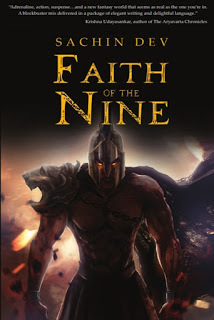
The Third Yuga is slowly drawing to a close. Nam – the greatest Empire on Janani – is going to face some fierce winds of change. Seers foresee omens of death and destruction in the return of the Banished One – A God who will claim the ashes of this world as revenge. While out in the streets, rumours abound – of older forgotten powers stirring.
Caught in this maelstrom of a power struggle between Gods are three ordinary lives: General Fateh, the most celebrated soldier in Nam who starts to question his faith, Ishan – a gifted orphan who struggles to comprehend his destiny and Abhaya – a young monk in search of truths about this world. Their choices and actions will shape the destiny of this scarred world that becomes the playground for vindictive Gods.
In a world where Rakshasas arise out of left-over traces of Maaya and twilight forms the portal to countless worlds around us for Daityas and Yakshis to dance through, a God is only as powerful as those who believe.And when Gods rise, faith of men will be tested…And broken.
Buy Links:
Paperback: Flipkart * LandmarkOntheNet * Infibeam * Pustak Mandi
eBook: Newshunt * Google Play
Read an Excerpt
Somewhere deep within the palace, wind chimes were
ringing like crazy, deep and sonorous, like temple bells gone rogue. Bajah
rushed through the dimly lit long corridors of the palace, her heart hammering
inside her. If she didn’t reach her lady in time, she was doomed, and so was
the child.
The child! Was it really going to be as foretold in
the Apocrypha? Then again, the Book of Truths just pointed out the various
branches of the future; the one branch on which they would walk wasn’t
disclosed. Could she choose? Could anyone choose? She was confused and afraid.
All she knew was that she had to get to Lady Anuskaya, and alone and terrified
within the Confinement, she would go crazy and not be able to manage the
childbirth. The thought brought chills to her mind. If the Inner Council were
to know that one of the Blessed acolytes was pregnant, then they would both be
executed; the acolyte and the unborn child. Nobody broke this cardinal rule.
Bajah still didn’t know who the father was, but that was the last thing on her
mind. She had to save her mistress, and
the thought gnawed away at her soul like a flesh-worm. Would she be able to
manage on her own?
The bells tolling in the distance urged her on. Her
light feet pattered soundlessly, flying past the carpeted walkway. Suddenly,
her balance shifted. Something snagged against her cloak, tightening up against
her throat as she slipped forwards. She croaked, her helpless arms flailing and
soundless screams stifled as the cloak tightened. Someone had tripped her and
was trying to strangle her! The pressure suddenly let up and she slipped.
The carpeted floor slammed into the side of her face
and her cloak ripped as she rolled away. A dark figure stepped out of the
crevasse in the wall, the lamp in hand obscuring the face in the gloomy
shadows. A falsetto voice greeted her.
“Little birdie, flitting freely, flying fast, you
won’t last … so sit awhile and rest your pile.”
The lamp swung in her face, as the person squatted
down and peered at her. In the dark, a pair of wolfish white teeth shone
through, leering at her. She knew the
voice. Cheema Okuri—a guard inside the Shikshadhaam, the House of Learning,
where acolytes lived. A kill dog for his masters at the Inner Council.
“Do you like the poem? I made it … as a paean for you.
Maybe I will coach the cook to sing it for your funeral, huh?” He grinned,
swinging the lamp. The shadows played hide and seek on his face. “Pruksa’s
blessings, little birdie, you really oughta slow down. Don’t you know, the
corridors within Shikshadhaam are treacherous places? Nasty places where you
slip and break your neck … you follow, li’l birdie?”
“What do you want, Cheema?” Bajah sat up, mustering as
much dignity as she could.
“What I want … ah! No time for social chit chats, I
see?” He squatted down, bringing his face closer to her’s. “You seemed to be in
a tearing hurry, and that set my warning bells a-tingling, Bajah Sudhanshu. You
know that feeling, don’t you? When this multi-legged creature walks up and down
your spine, your heart beats faster and you’re left feeling a little dry in the
mouth. It’s called suspicion. And
when I see birdies trying to take flight without letting me know, then somethin’ don’t add up right. Must I remind you that
within the confines of the Dhaam, anything that flies, flies with just one
wing, the other being busy protecting itself, lest it get shot down? Ye with me
so far, li’l birdie?”
Bajah nodded, dull fear thudding through her like
bellows in a forge. Did he know about the
lady? Did the council suspect? Displaying an outwardly calm that she didn’t
feel at all, Bajah stood up, “Cheema, you are not threatening me now, are you?”
Cheema laughed, “I always maintained that birdies
oughta be caged. Nooo, li’l birdie, I am not threatening you. Charged with
keeping the acolytes safe within the Dhaam, this hurried flight of yours
ruffled quite a few feathers on the upper levels. I’m just a messenger, birdie.
Just like you. So, now … d’ye want to tell me where ye’re flying with such
haste?”
Bajah turned her back onto Cheema, making sure he
didn’t see the flint of fear that sparked in her eyes. “Lady Anuskaya’s been
taken sick. She wanted me to bring her the Book of Solace and fetch the Castle Vaidyas to care for her.”
“The Book? An acolyte demanded for the Book?” Cheema’s
tone had an edge to it that Bajah hated, the tone twisting in her gut like a
stuck knife. ‘Does this lowly guard know that the acolytes aren’t allowed to
read the Book, not without one of the priests around?’ Cheema’s sharp question
brought her back to the rain-lashed parapet of the castle.
“So what are you doing here? The Haveli is to the North. The gardens ought to be the
easiest route to the Haveli to get the Book?”
“I have to collect the Lady’s medicines,” Bajah lied,
her face taut. Cheema nodded, holding the lights over the handrails, peering
out into the cold night, “Some kind of a freak windstorm whipping in from the
Odhaan. You ought to keep indoors and not take this route. I will accompany you
to the living quarters. Oh wait, where’s the Book?”
Bajah bit her lips, blanched white with fear. This
wasn’t going good. As with the windstorm and the rain Gods, this was fast going
downhill. Mists of raindrops sprayed onto her face as the winds shifted. The
sky cleaved, as purplish lightning crashed and rolled across the clouds. The
smell of acrid burnt ozone hung heavy on the parapet as Bajah’s heart raced. A
sudden gust of wind swept across and doused the lantern lights, blanketing the
corridor in complete darkness. Cheema cursed over the sounds of wind ripping
through the dark hallway, the curtains near the far oaken doors billowing and
flapping hard. He knelt down to light the fuse inside the lantern.
It was now or never.
About the Author:
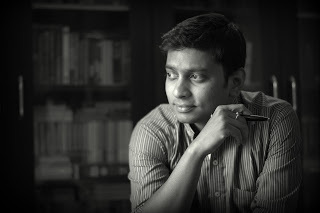
Sachin discovered Tolkien in his teens, alternative rock as a new adult and digital marketing in pretty much his late twenties. These still form a large wedge in his circle of life. Travel, radio and theatre have also figured in that ever-expanding and diminishing circle.
On perhaps a more prosaic note, he is an engineer from BITS Pilani and holds an MBA from Indian School of Business. Attribute the love for numbers and pie-charts to this. He is currently based in Bangalore and happily married to Harini. He spends an inordinately large amount of time chasing after his two dogs (who love the free life a bit too much) when he is not busy dreaming up fantasy worlds full of monsters. And beautiful Yakshis, of course.
He can usually be found ranting on twitter under the handle @xenosach, devouring books and talking about them on his blog. You can always stalk him online at his official website

The post The Faith of the Nine appeared first on § A Scientist Envisioning Science Fiction.
November 5, 2015
“Soul Warrior” Release Day Blitz
About the Book:
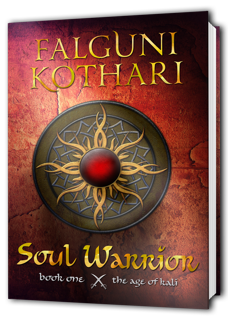
Twisted myths. Discretion advised.
Fight fate, or succumb to destiny?
In the dark Age of Kali, the Soul Warrior alone stands guard over the Human Realm, protecting its denizens from evil-willed asuras or demons. When a trick of fate appoints him guru to a motley crew of godlings, he agrees to train them as demon hunters against his better judgment. Suddenly, Lord Karna is not only battling the usual asuras with sinister agendas, but also rebellious students and a fault-ridden past.
Spanning the cosmic realms of mythic India, here is a tale of a band of supernatural warriors who come together over a singular purpose: the salvation of Karna’s secret child.
Book Links:
Kobo * iBooks * Amazon US * Amazon UK * Amazon Canada
Read an Excerpt:
CHAPTER ZERO
DWANDA-YUDDHA: THE DUEL
The Himalayan Mountains.
Five thousand years ago.
Absolute darkness shrouded the Human Realm, and had for three days and three nights. Some believed the occurrence was prophetic, like the prolonged amavasya or new moon night that had heralded the Great Kuru War two thousand years ago. The war had given birth to the dark Age of Kali, the age of asura. In contrast, hope was ripe that this event would trigger the Age of Light. But the Bard wasn’t here to succumb to superstition.
The first day without the sun’s light had spread confusion and chaos across the realm. The second day had brought desperation in the breasts of humans and fear in the belly of Celestials. The third day—today—was a feast for the asuras. Death lay everywhere.
The human world burned without its sun. How soon before the Heavens went up in flames?
The Bard’s troubled eyes reread the last line. Then he deliberately scratched it off, lifting his long, pointed talon from the parchment made of dry palm leaf. With a sigh, he rested his aching hand on his trembling thigh. He would spare a moment to ease his body, and his mind from the strain of observation and due recordkeeping. If he didn’t, he’d forget his duty as Witness of the Cosmos, and begin to question fate.
Despite the fire that crackled close to his right knee, and the feathered form of his upper body, he was cold. An icy wind had settled around the Pinnacle of Pinnacles, where he sat cross-legged on a seat made of rock and snow. He’d chosen this perch because it gave him an impartial view of the events happening in the world. He was the Bard, entrusted with keeping the Canons of the Age of Kali, just as the Soul Warrior was entrusted with keeping the Human Realm safe from asuras. Would they both fail in their duty today?
The Bard shook off the heavy despair the darkness had brought into the world. He mustn’t judge. He shouldn’t question. He would sharpen the talon on his forefinger, dip it into the vessel of ink kept warm by the fire, and write this tale. That was all he could do. Be the witness to history.
So he raised his feathered hand and began to write again while his eyes, sparked with power, knowledge and magic, saw clearly events unfolding from great distances. A thousand kilometers to his right, Indra, the God of War and Thunder, fought the Dragon. Indra did not fare well. But that didn’t concern the Bard as much as the clash between the Soul Warrior and the Stone Demon. Over and over, his eagle eyes were drawn to the duel taking place in the heart of the world, not only because it was a magnificent battle to behold, for it was, but because its outcome would decide mankind’s destiny.
The Soul Warrior was more than a great warrior. Karna was a great soul. Fair, honorable, brave and resilient, he was the perfect protector of the Human Realm. Of course, there were other reasons he’d been chosen to fill the office of Soul Warrior—there always were when Gods and demons were involved. But Karna’s existence was a testament to righteous action and if anyone could bring back the day, it would be him.
But how did one vanquish stone, the Bard wondered?
Avarice and cruelty, two nefarious desires, had made Vrtra and Vala attack the Human Realm. Three days ago the Dragon had swallowed the Seven Rivers in the north, and the Stone Demon had imprisoned the Sun God, his daughter, and all the cattle of the region in his cave.
The Bard paused his writing as a thin vein of lightning winked across the skies, but without the accompanying roar. Indra’s strength waned. His thunderbolt hadn’t left Vrtra screaming in pain this time. The Bard spared a moment’s attention on the duel, just enough to note that the Maruts, the Celestial Storm-gods, waited in the clouds to rescue their god-king in case of a calamity. Indra would survive even in defeat. Of that, the Bard was sure.
But Karna had no one at his back. His might and god-powers had depleted without the sun’s healing warmth and light. His divine astras, weapons, had not slowed the Stone Demon down, at all. Only the conviction that he could not fail his godsire, his sister, and the innocents under his protection drove him now. His birth family had once abandoned him to his fate, but he would not abandon them to theirs—such was the greatness of Karna.
The Bard crossed out the last observation. No questions. No judgment. No praise, either. The canons would be free of all emotion. He wasn’t here to embellish history or glorify the history-makers, as some bards were wont to do.
It wasn’t embellishment to write that the foothills of Cedi were drenched in the Soul Warrior’s blood. Or observe the gushing wounds on his body, despite his armor, that would make the hardiest of warriors bellow in agony, but not him. It wasn’t embellishment to write that the Heavens were empty for the Celestials had come to Earth to watch the battle, firelight cupped in their palms to light the warrior’s way.
The Naga, the Serpent People, also looked on, hissing from the mouth of the portal that led to their underground realm beneath the hills. The Serpent King will not choose a side. Vrtra and Vala were half Naga, after all. All across the Human Realm, demons roamed free, taking advantage of the darkness and preying on human flesh and human souls. It was a terrible moment in history. The asuras had the upper hand in the eponymous age of Demon Kali.
Vala did not have arms and half a leg, but still he came at Karna. He had an ace up his sleeve. There were plenty of creatures about, an entire mountain close at hand. He began to chant the spell of soul transference. It was the darkest of all magic, the possession of another’s soul. Soon, he would be whole again and stronger than before.
Battered and bleeding, the Soul Warrior veered away from the Stone Demon. He leapt over boulders and charred vegetation. The onlookers called him a coward. Had he forfeit the duel? Has he forsaken mankind?
Karna dove for Manav-astra, the spear of mankind, he’d thrown aside yesterday after his bow, Vijaya, had shattered under repeated use. In one smooth motion, he rolled, picked up the astra, coming up in the spear-thrower’s stretch. His tattered lower garment billowed about him as a gust of wind shot through the air. His muscled torso glistened with blood and sweat, tightened as he pulled the arm holding the spear back.
He meant to throw Manav-astra at Vala. A futile attempt, to be sure? As long as Vala was made of stone, broken or not, his body was impregnable. Karna should have waited for Vala to transfer his soul to an onlooker. Then Karna should have vanquished the possessed creature.
Taunting laughter reverberated through the foothills of Cedi. Vala had reached the same conclusion. The Celestials looked at each other in angry silence, unable to interfere. A dwanda-yuddha duel was fought between two opponents of equal size and strength alone. The humans hadn’t stopped screaming in three days, the din simply background noise now.
The Bard scribbled the observations onto the parchment in no particular order. He wished he was a painter, for surely this was a picture worth a thousand words.
The demon hobbled toward the warrior, who stood still as stone with his arm drawn taught behind him. Then finally, with a roaring chant the Soul Warrior shifted his weight from his back leg to his front and let fly Manav-astra at the Stone Demon with all his remaining might.
Karna didn’t wait to see the ramifications of his action. And there were plenty to come. He ran into the mountain cave to free Vala’s hostages. Within moments the rock face rent in half, and bright streams of light speared through the terrible darkness. A new day had dawned on the Human Realm after three days of perpetual night.
The sun’s power was too bright, too full of hope. Yet, the Bard looked on pensively, wondering if the Soul Warrior knew this wasn’t a victory. It was merely a reprieve.
About the Author:

Falguni Kothari is a New York-based South Asian author and an amateur Latin and Ballroom dance silver medalist with a semi-professional background in Indian Classical dance. She’s published in India in contemporary romance with global e-book availability; Bootie and the Beast (Harlequin Mills and Boon) and It’s Your Move, Wordfreak! (Rupa & Co.), and launches a mythic fantasy series with Soul Warrior (The Age of Kali, #1)
I’m embarrassed to admit how many social media accounts I own :
Website * Blog * Twitter * Facebook * Goodreads * Pinterest

Giveaway
The post “Soul Warrior” Release Day Blitz appeared first on § A Scientist Envisioning Science Fiction.
November 3, 2015
Why Writing is Like Golfing…
 I’m a writer, and I’m a golfer. Are there any two activities as far apart as writing and golfing are? And yet, they are so close to each other when what matters is having success with them.
I’m a writer, and I’m a golfer. Are there any two activities as far apart as writing and golfing are? And yet, they are so close to each other when what matters is having success with them.
I throw it here and now: golfing and writing have so many things in common that I believe I’m writing when I’m out on the fairway, and I’m golfing when I leave that perfect line on the screen, like the perfect divot of a perfect shot. Everything has to do with visualization and sensations.
Be aware of as many tiny details as possible
When you’re golfing, these details will inform the way your shot might come out of the turf; when you’re writing, they will inform you about how your character might react in certain situations. It might even be a very tiny thing, the direction the grass blades are along the path your club will travel, or where the light in your scene comes from, the smell and odours, the sounds reflecting between the walls of a deserted corridor, even though no one is going to hear it, because that’s what affect us in real life. You will absorb these details and they can have a powerful effect on your performance, on your shot, or your written words.
For Hemingway, details were crucial, even if you omitted most of them. That’s what he called The Iceberg Theory (the 1/8 of an iceberg that we see is supported by the 7/8 we don’t). If you know a lot about a subject, you may leave things out, but the reader will feel their presence nonetheless. But if a writer doesn’t know much about a topic, and leaves certain things out, there’s a hollowness to the work; if you disregards where the rough and where the tall grass point to, your shot will miss the target.
Live in the world of your story and be part of the golf course
Don’t think of yourself as an external observer, be in that world. Absorb the character and imagine you’re him or her. Don’t think about the words. Be present in that world, not this one. For golfers it means forget the rest, it is you and the ball, the turf, the club, and there’s a connecting line between the ball and where you want it to land. You have to see it, you have to feel the ball enter in that particular grove in the air and follow it until it lands exactly where it has to land.
For writers, it means being more than narrating their story as if they’re watching a movie. It means being in that world, notebook in hand, chronicling what you see, dodging bullets, freezing in the snow, shooting at spaceships and gasping for air when the hull breaks, smelling the blasters shots and the ozone that burns your throat.
If you can immerse yourself in that world, you will see more details, the experience becomes fuller, and you’ll able to deliver a better golf shot, or a better story to your readership. If you can immerse yourself in the golf course, you’ll be part of it, you will not fight it and the ball will fly where it has to, naturally, effortlessly.
Create a back story for your character; know how your ball got there and why
Write scenes and short stories about characters. In your mind, make your character real, know what he did for work, why he was single, or married, or living with a partners in a union.
Too often, when readers say characters are flat it is because they are: they don’t come with back stories. They don’t have relationships spelled out in the mind of the writer. Did the protagonist have friends? Why isn’t he with them? Does he get along with his mother? What kind of job does he have? Writers have to answer those questions themselves for each character that will enter the scene.
Writers could spell out character back stories, small details, likes and dislikes, and anything that might become important later on. They’ll write out scenes between characters that will never see the light of day, just to know how they would act and react, just to know them.
If you can know why your characters are made the way they are, who influenced them, and why they like or don’t like other people, this becomes one of those very important iceberg details that shape your writing.
In golf, it is true that overanalyzing can destroy your shot, but it is not true that every shot is independent from the previous one, and the previous one, and the previous one. All is connected, you score a birdie on hole 7 because you had a great start on hole 2. Are you flirting with the ball, or are you hitting it fiercely: they don’t like that. Why the grass is shinier on that area and drier on another, is there a wind that gets into play? What were your sensations when the ball flew just right, and how did you feel before sinking your club and slicing that ball. Again details, visualize the next shot using the story of the previous ones, how missing a certain detail altered your shot, visualize shots that you’ll never hit just to immerse yourself with confidence in the one that you will hit with a clear mind.
Base characters on yourself and real people, and your next shot on past ones
When Hemingway created characters for his stories, he modeled them after people he actually knew. He just changed their names. By using real people, he already had the back story written, he knew the tiny details, and he could more easily inhabit their world.
In a letter to F. Scott Fitzgerald, Hemingway said:
“Goddamn it you took liberties with peoples’ pasts and futures that produced not people but damned marvellously faked case histories. . . You could write a fine book about Gerald and Sara for instance if you knew enough about them and they would not have any feeling, except passing, if it were true.”
In essence, don’t just make up people, because the characters will be fake. Instead, write about real people and make minor changes.
By using real people, you can create real characters who are emotionally rich and deep, not shallow caricatures or archetypes. Or, you have to be prepared to create their backstory iceberg and never show it to your readers. Well, at least 7/8 of it.
You played in thousand different situations, you know what happened then and there, you have memorized the place, the slope, the grass, the temperature, the divot you took, and the humidity of the air, the lie of the ball, and whether the grass was tall or smooth like silk. When you go for a shot, hit again that successful shot you had in the same conditions, base your golf on the successes, feel them so real that you will be able to repeat them again and again and again.
Listen carefully and react to what the characters tell you. Before hitting the ball, listens to your instincts more than your rationality
Sometimes fiction writers “let the characters take over.” The characters act and react to what’s happening on the page and claim their free will. I’ve written scenes where I had a basic idea of what should happen, only to have the characters take the story in a completely different direction, and I felt blessed.
What’s really happening is the writer imagines how the characters would react in certain situations, and writes that down rather than forcing actions and conversations to reach a certain preconceived end. The writer holds on and goes along with the free will of the characters. This can only happen when writers live in the world of their story, know their characters and what drives them, and has them in their mind more real than real people they know.
In golf “you” are the person you should listen to. Imagine yourself delivering the shot, lifting the club and traverse the ball. Fell how it should feel. Build on knowledge, feeding one idea into the next, one gesture into the next one, seamlessly.
When you get a chance to meet someone whose work inspires you, take it. When you get a chance to talk about the creative process with other creative people, take it. With a little lateral thinking, you never know what you might learn, and you’ll never know how beautifully the ball will soar.
The post Why Writing is Like Golfing… appeared first on § A Scientist Envisioning Science Fiction.
November 1, 2015
Why Scientists Envision Science Fiction Even Before SF Writers
 Today’s theories and concepts are concerned largely with invisible entities: not only unseen force fields and insensible rays, but particles too small to see even with the most advanced microscopes. Theories at the speculative forefront of physics flesh out this unseen universe with parallel worlds and with mysterious entities named for their very invisibility: dark matter and dark energy.
Today’s theories and concepts are concerned largely with invisible entities: not only unseen force fields and insensible rays, but particles too small to see even with the most advanced microscopes. Theories at the speculative forefront of physics flesh out this unseen universe with parallel worlds and with mysterious entities named for their very invisibility: dark matter and dark energy.
Sure, many of edge theories sound wild, but it has beet always the case: in the light of discoveries such as X-rays and the electron, Fournier d’Albe, a respected researcher in radio telecommunications, insisted that we’d be unwise to discount something just because we can’t see it directly.
There are things that now seem to be the antithesis of science, but when science first began to fixate on invisible entities, many leading scientists saw no clear distinction between such occult concepts and hard science.
For example, if radio waves could transmit invisibly between a broadcasting device and a receiver, it should not seem so hard to imagine that human brains—which are after all quickened by electrical nerve signals—could act as receivers, with technological or chemical and genetic help.
Maxwell’s friends Peter Guthrie Tait and Balfour Stewart, both professors of physics, published The Unseen Universe (1875), in which they presented the ether—supposedly the rarefied fluid that carries Maxwell’s waves—as a bridge between the physical and spiritual worlds, both of which they considered to be populated with intelligences.
(1875), in which they presented the ether—supposedly the rarefied fluid that carries Maxwell’s waves—as a bridge between the physical and spiritual worlds, both of which they considered to be populated with intelligences.
Light exerts a “pressure” on objects, exerted by the photons—despite having no mass, (current commonly accepted physical theories imply or assume the photon to be strictly massless) photons can deliver a little kick to surfaces they strike—that pressure is a real enough phenomenon, and gave birth to solar sails spaceships in the mind of SF authors. But if a photon has no mass, how can it be trapped in a Black Hole? Provocative question, of course.
Several of the early pioneers of television were motivated by their paranormal sympathies, and John Logie Baird, usually regarded as the device’s real inventor, believed he was in spiritualistic contact with the departed spirit of Thomas Edison.
It might have seemed natural and harmless enough to refer to the double images of early television sets, caused by poor reception or bad synchronization of the electron beam, as “ghosts”—but this terminology spoke to, and fed, a common suspicion that the figures you saw on the screen might not always correspond to real people.
And what about theories of Alternative Universes, versions of us in these many replica worlds—they are all in some sense us, but there’s no prescription for where to put our apparently unique consciousness. This conundrum arises not (as some adherents insist) as an inevitable result of “taking the math seriously,” but simply because of the impulse, motivated by neither experiment nor theory, to make each formal mathematical expression a complete world of its own, invisible from this one.
It seems quite possible that dark energy, and perhaps dark matter too, will turn out to be like Crookes’ “dark space” and “radiant energy”: not exactly stuff, but symptoms of some hitherto unknown physical principle. These connections were exquisitely intuited by Philip Pullman in the His Dark Materials Trilogy , where (the title alone gives a clue) a mysterious substance called Dust is an amalgam of dark matter and Barrett’s quasi-sentient psychomeres, given a spiritual interpretation by the scientist-priests of Pullman’s alternative steampunk Oxford University who sense its presence using instruments evidently based on Crookes’ light mill.
, where (the title alone gives a clue) a mysterious substance called Dust is an amalgam of dark matter and Barrett’s quasi-sentient psychomeres, given a spiritual interpretation by the scientist-priests of Pullman’s alternative steampunk Oxford University who sense its presence using instruments evidently based on Crookes’ light mill.
Extracted from an original article by Philip Ball in Nautil.us
Massimo Marino is a scientist envisioning science fiction. He spent years at CERN and The Lawrence Berkeley Lab followed by lead positions with Apple, Inc. and the World Economic Forum. He is also co-founder of “Squares on Blue”, a Big Data Analytics service company, and of BookGarage, a publishing service brokerage company.
Massimo currently lives in France and crosses the border with Switzerland multiple times daily, although he is no smuggler. #SFWApro
As a scientist writing science fiction, he went from smashing particles at accelerators at SLAC and CERN to smashing words on a computer screen. He is is now an author with Booktrope Publishing, LCC, and Active Member of SFWA – Science Fiction & Fantasy Writers of America.
smashing particles at accelerators at SLAC and CERN to smashing words on a computer screen. He is is now an author with Booktrope Publishing, LCC, and Active Member of SFWA – Science Fiction & Fantasy Writers of America.
He’s the author of multi-awarded Daimones Trilogy. The 1st volume, Daimones (The Daimones Trilogy Book 1) , published by Booktrope is available since August 2015.
, published by Booktrope is available since August 2015. 
 His novels have received the Seal of Excellency from both AwesomeIndies.net and IndiePENdents.org
His novels have received the Seal of Excellency from both AwesomeIndies.net and IndiePENdents.org
• 2012 PRG Reviewer’s Choice Award Winner in Science Fiction
• 2013 Hall of Fame – Best in Science Fiction, Quality Reads UK Book Club
• 2013 PRG Reviewer’s Choice Award Winner in Science Fiction Series
• 2014 Finalist – Science Fiction – Indie Excellence Awards L.A.
• 2014 Award Winner – Science Fiction Honorable Mention – Readers’ Favorite Annual Awards
His novels are available from Amazon, Barnes & Noble (Nook), iTunes Apple Store, and many other retailers around the world.
Join his mailing list for new releases, or follow him on Facebook, Google+, and Twitter.
The post Why Scientists Envision Science Fiction Even Before SF Writers appeared first on § A Scientist Envisioning Science Fiction.
October 31, 2015
6 Intensely Thrilling Haunted Houses

This post was posted by TheHipmunk on Hipmunk’s Tailwind blog on 29th of October.
Aside from candy corn, Jack-o’-lanterns, black cats, and ghosts, there’s nothing that screams Halloween more than a haunted house. During the month of October, thousands of small-scale haunted houses crop up around the States, many at local festivals, churches, or schools. However, for those brave souls, there are some truly terrifying worlds out there to explore. Check out our list below for some of the most impressive (and horrifying) haunted houses to see this Halloween!
That is, of course, if you dare.
1. Escape the Great Room at Headless Horseman
Spanning 65 acres of farmland in Ulster Park, NY, the Headless Horseman complex of terrors is a favorite amongst haunted-house-enthusiasts looking for an all outdoor experience. With naturally landscaped forbidden forests, eerie ponds, and darkly expansive cornfields, visitors are never quite sure what’s lurking in the shadows. Plus, they’ve got ten separate attractions, including a dizzying corn maze, a spooky hayride, 7 haunted houses, and the newly curated experience “The Great Room Escape,” in which visitors have to figure out how to escape a room of bolted doors and locked windows.
2. Check Into the Pennhurst Asylum
Housed in an abandoned asylum in Spring City, PA, the Pennhurst Asylum is a wildly popular Halloween attraction. Fitted with high-tech animatronics, digital sound, artifacts recovered from the original asylum, and a bevy of realistic actors, a walk-through this dilapidated hospital is no joke. For those bold (or crazy) enough to make it through the narrow hallways of the hospital, the asylum offers two more haunted experiences in the Dungeon of Lost Souls or the Tunnel of Terror.
3. Explore the Dent Schoolhouse
Touted as Cincinnati’s scariest schoolhouse, the Dent Schoolhouse is the perfect haunted pick for those interested not only in shocks and thrills, but also in a compelling story. As legend goes, the very real schoolhouse opened in 1894 and was celebrated for decades as a top-notch school. That is, at least until 1942, when several students mysteriously disappeared. To find out what happened to those kiddoes, grab a group of friends and spend an evening exploring the spooky nooks and crannies of Dent.
Based around the mythology of the oft-missing thirteenth floor, Denver’s largest haunted house, 13th Floor, brings together spooks and thrills for an experience visitors aren’t soon to forget. New attractions for this year include Hallow House, a skin-tingling walk-through featuring manic clowns, Undead: What Lies Beneath, an exploration through an abandoned research facility complete with empty labs and shattered test tubes, and Feral Moon, which winds participants through a large and creepy cemetery.
5. Join the Cult of The Summoning
Based out of the Scarehouse in Pittsburgh, The Summoning is about as thrilling as any haunted house walkthrough could be. The experience takes you all the way back to 1932, to a time where secrets, mysteries, and betrayal were rife in the 100-year-old house where The Summoning is set. Visitors will find themselves twisting through darkened hallways, all while the chants of ancient ritual pulse in the background. The question is, are those who visit this house the initiates of some new order or are they instead, the sacrifices?
6. Commune with Freaks at the House of Shock
With live music and a full service bar, this New Orleans horror staple is the perfect pick for the those looking for something rollicking. Occupying over 25,000 square feet, the House of Shock boasts an impressive array of skin-tingling attractions for its 2015 line-up: Bordello of Freaks, Laff in the Dark, and the traditional House of Shock haunted house. No matter the attraction, the special effects at House of Shock are infamously realistic and will leave the fearless quaking in their boots and reaching for a strong cocktail.
The post 6 Intensely Thrilling Haunted Houses appeared first on § A Scientist Envisioning Science Fiction.
October 11, 2015
Columbus Day Celebrations from Around the Globe

This post was posted by TheHipmunk on Hipmunk’s Tailwind blog on October 10, 2015.
October 12th marks the anniversary of Christopher Columbus’ 1492 arrival in the Americas, and Americans have celebrated the occasion in an official capacity since 1937. While schoolchildren in the U.S. learn about the journey made on the Nina, the Pinta, and the Santa Maria, the holiday has become more recognized as a day off from work and the unofficial beginning of the fall sale shopping season. Travelers interested in seeing how other nations with a connection to Columbus celebrate the day should take a long weekend trip to the following four places.

1. The Bahamas
In the Bahamas, October 12th, once known as Discovery Day, is now celebrated as Heroes Day. Columbus’s initial landfall occurred on the Bahamian island of Guanahani, where he christened it San Salvador Island, and it’s now famous for its secluded and idyllic beaches. Like Columbus Day in the United States, Heroes Day in the Bahamas is accompanied by the closure of schools, banks, public offices, and most shops. This October, Heroes Day will be celebrated with a fiveday festival from October 8 to October 13, featuring traditional Bahamian food, drink, and performances. Those wishing to visit during that time should stay on the main island, in Nassau, which has a range of hotel options to suit all budgets. Travelers looking to splurge should check out the luxurious Cove Atlantis resort, while those hoping to save should try the Best Western Bay View Suites.

2. Mexico
In Mexico, Columbus Day is celebrated as Dia de La Raza (“day of the race”). Dia de la Raza is a public and bank holiday, but that’s where the similarities with the U.S. celebration of Columbus Day end. Many activists in Mexico, and other Spanish-speaking countries, have chosen to reclaim the day as a celebration of indigenous life and traditions, because for these nations, the arrival of Columbus from Spain led to nearly all of Central and South America’s eventual colonization by the Spanish. Thus, the Dia de La Raza has become a celebration and remembrance of the mixing of peoples and cultures. In Mexico, the Dia de La Raza has been celebrated countrywide since 1928, with Mexicans celebrating both their Spanish and indigenous roots. First-time visitors to Mexico should try staying in Mexico City, the capital and the country’s largest city. Mexico City boasts a population comprised of many people with indigenous roots, coming from all over the country. Try staying in downtown’s Hotel Imperial Reforma, offering a great location at a hard-to-beat price, or the upscale and charming Green Park Hotel.

3. Spain
As Spain’s Queen Isabella was the monarch backing Columbus’s fateful expedition, it’s no surprise that the explorer’s journey to the Americas is a holiday known as the Fiesta Nacional, which celebrates the diversity of the worldwide Spanish-speaking community. However, the day is shared with two other significant events: the Day of Armed Forces, marked by an extravagant military parade, and the feast day of Our Lady of the Pillar, the patron saint of Spain’s Civil Guard. Those wishing to be in Madrid for the assorted festivities should stay at the affordable yet luxurious Hotel La Moraleja or the ultra-modern Urban Hotel, both located in the city proper.
4. Italy
Travelers wishing to learn more about the explorer himself should try to take a trip to Italy, particularly Columbus’s homeland of Genoa. While Italian-Americans have long celebrated the explorer in the U.S., with San Francisco’s Italian Heritage Parade and New York City’s Columbus Day Parade being notable celebrations, his home country has only started feteing Columbus more recently. In fact, Columbus Day is not a national holiday in Italy, but his native Genoa hosts celebrations. In recent years, Americans living in Genoa join local politicians for a ceremony and reception at Columbus’s home, restored in 2001. Visitors to Genoa should stay at the budget-friendly and conveniently located Hotel Continental Genoa or the upscale Clarion Collection Hotel Astoria Genova.
The post Columbus Day Celebrations from Around the Globe appeared first on § A Scientist Envisioning Science Fiction.

